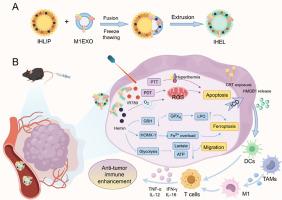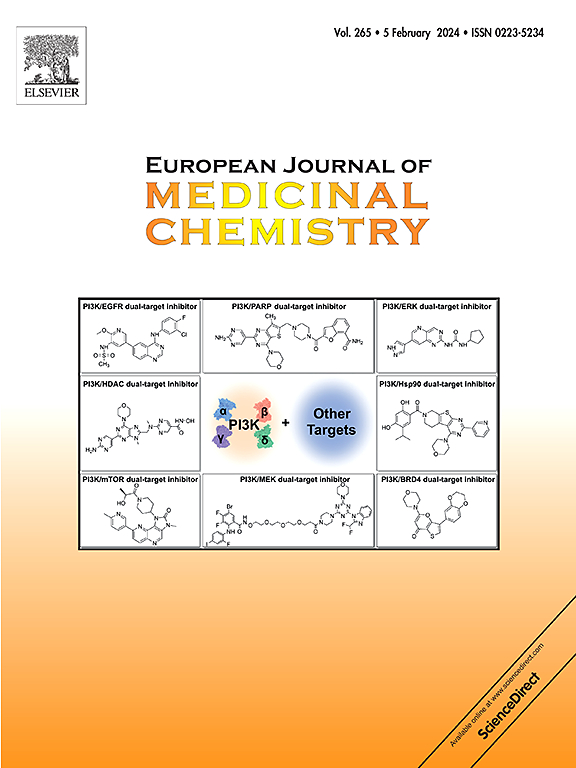Exosome/liposome hybrid nanovesicles for enhanced phototherapy and boosted anti-tumor immunity against melanoma
IF 6
2区 医学
Q1 CHEMISTRY, MEDICINAL
引用次数: 0
Abstract
Although phototherapy shows great potential as a safe ablative modality for treatment of cutaneous melanoma, there remain serious flaws restricting its therapeutic outcomes, such as cellular resistance against apoptosis, tumor hypoxia, rewritten cellular metabolism and abnormal angiogenesis. To cope with these challenges, this work combines hemin and IR780 (phototherapy agent) and designs an orchestrated liposome/macrophage-derived exosome hybrid delivery system (named IHEL) for tumor-specific delivery of these two drugs and synchronous tumor microenvironment (TME) reprogramming. As the experimental data suggest, by triggering iron overload and up-regulating HMOX-1, hemin drives a shift from an apoptosis-dominant anti-cancer mode to a combined ferroptosis/apoptosis mode of IR780 treatment, which helps to avoid apoptosis resistance. Also, the catalase-like activity of hemin strengthens PDT effect by alleviating hypoxia. In addition to the above-mentioned enhanced direct cell-killing effect, IHEL also provokes anti-cancer immunity by triggering immunogenic cell death (ICD), intervening glycometabolism and polarizing tumor-associated macrophages (TAMs) in TME to M1-type. This work strongly demonstrated the rationality of IR780/hemin combination and delicately designed immunostimulatory nanocarriers for their tumor-specific delivery, providing both theoretical foundation and practical strategies for advanced anti-cancer phototherapy.


求助全文
约1分钟内获得全文
求助全文
来源期刊
CiteScore
11.70
自引率
9.00%
发文量
863
审稿时长
29 days
期刊介绍:
The European Journal of Medicinal Chemistry is a global journal that publishes studies on all aspects of medicinal chemistry. It provides a medium for publication of original papers and also welcomes critical review papers.
A typical paper would report on the organic synthesis, characterization and pharmacological evaluation of compounds. Other topics of interest are drug design, QSAR, molecular modeling, drug-receptor interactions, molecular aspects of drug metabolism, prodrug synthesis and drug targeting. The journal expects manuscripts to present the rational for a study, provide insight into the design of compounds or understanding of mechanism, or clarify the targets.

 求助内容:
求助内容: 应助结果提醒方式:
应助结果提醒方式:


